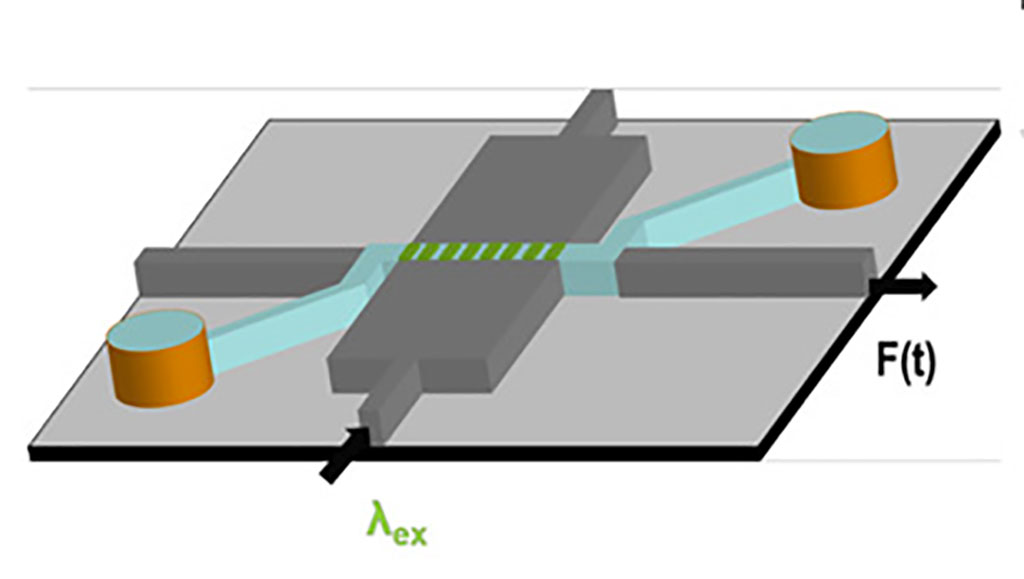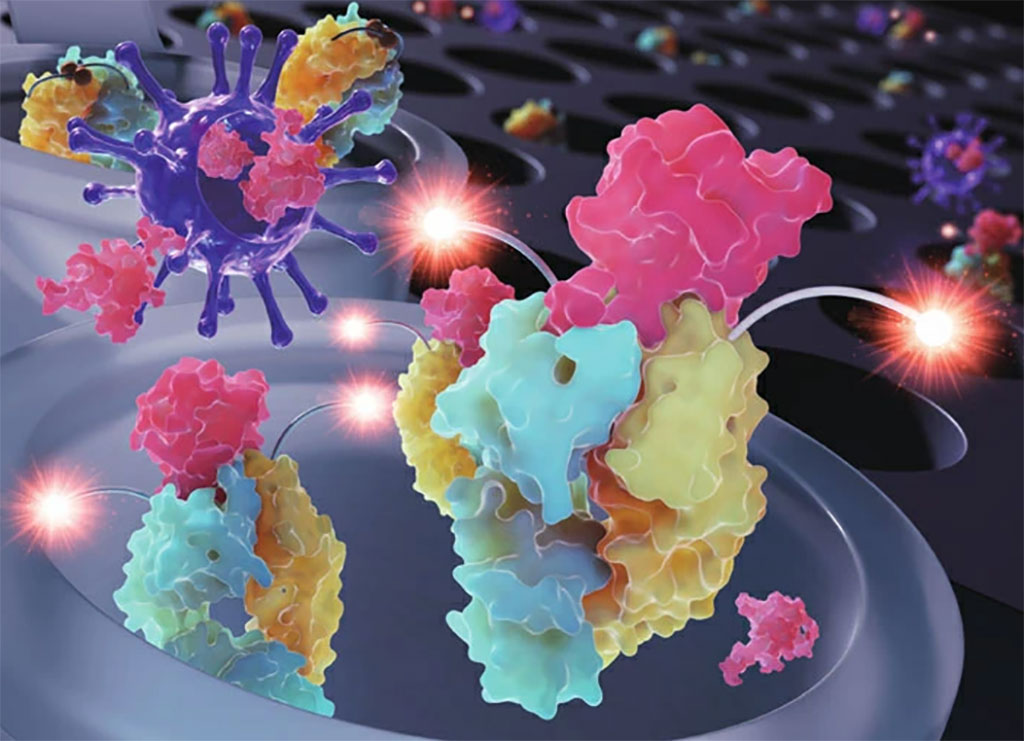Novel Chip-Based Antigen Test Provides Ultrasensitive Detection of SARS-CoV-2 and Influenza A
By LabMedica International staff writers
Posted on 12 May 2021
A novel chip-based diagnostic technology can detect individual viral antigens in nasal swab samples to identify the viruses that cause COVID-19 and flu with a single test.Posted on 12 May 2021
Researchers at UC Santa Cruz (Santa Cruz, CA, USA) have developed a novel chip-based antigen test that can provide ultrasensitive detection of SARS-CoV-2 and influenza A, the viruses that cause COVID-19 and flu, respectively. The test is sensitive enough to detect and identify individual viral antigens one by one in nasal swab samples. This ultrasensitive technique could eventually be developed as a molecular diagnostic tool for point-of-care use.

Image: This illustration shows the setup of the optofluidic chip for rapid detection of single antigens of SARS-CoV-2 and Influenza A (Photo courtesy of Stambaugh et al., PNAS 2021)
The new chip-based antigen test is not only highly sensitive, but also enables simultaneous testing for multiple viruses from one sample. This is important for diseases such as COVID-19 and flu which have similar symptoms. Measures implemented to control the COVID-19 pandemic have reduced the incidence of flu dramatically, but in the future doctors may need a rapid test that can tell them which respiratory virus a patient is infected with.
The researchers have pioneered “optofluidic chip” technology for biomedical diagnostics, combining microfluidics (tiny channels for handling liquid samples on a chip) with integrated optics for optical analysis of single molecules. To develop the new antigen test, the team designed a fluorescent probe bright enough that individual markers can be detected optically on the chip. The test uses an “antibody sandwich” approach commonly used for immunoassays. In this case, antibodies specific for the target antigen are attached to magnetic microbeads, so that any target antigen present in the sample sticks to the beads. After washing, a second antibody with the fluorescent marker attached is added, and it binds to any target antigen present on the beads. The fluorescent markers are attached to the antibodies by a spacer that can be cleaved by ultraviolet light, which releases the markers to flow through the detection chip where they are detected one by one. The researchers attached a green marker to the coronavirus antibody and a red marker to the influenza antibody to distinguish between the two viruses.
“This is a chip-based biosensor capable of detecting individual proteins one at a time, and we show how it can be used to detect and identify the antigens for multiple diseases at the same time,” said senior author Holger Schmidt, professor of electrical and computer engineering at UC Santa Cruz. “It’s a whole new way of looking for molecular biomarkers, not only for infectious diseases, but for any protein biomarkers used in medical testing.”
Related Links:
UC Santa Cruz




 assay.jpg)








